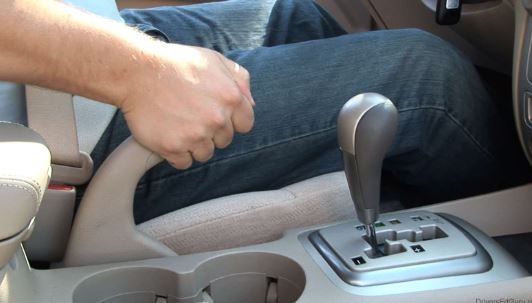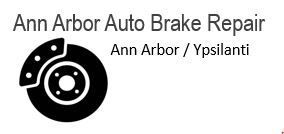When Should The Emergency / Parking Brake Be Serviced?

Understanding the Vehicle Parking Brake
The parking brake, previously known as the emergency brake or "e-brake," plays a vital role in a vehicle's overall braking system. Its primary function is to keep the vehicle stationary when parked, which is crucial, especially on inclines or uneven surfaces. While the importance of the parking brake is sometimes overlooked, its functionality and maintenance are essential components of vehicle safety.
Functionality and Purpose
The parking brake operates independently of the standard hydraulic brake system, which helps to engage brakes using hydraulic pressure. Instead, the parking brake relies on mechanical cables linked to the rear wheels. This design ensures that the parking brake can operate even if issues arise with the primary brake system due to hydraulic failure, making it a critical safety feature.
Statistics underscore the importance of using the parking brake: according to the National Highway Traffic Safety Administration (NHTSA), a significant percentage of accidents involving parked vehicles occur due to improper parking. In fact, improperly secured vehicles can roll away, leading to injury or property damage. Engaging the parking brake minimizes this risk effectively.
Using the parking brake not only secures the vehicle but also takes some strain off the transmission's parking pawl—a small pin that locks the transmission in place. Regular use can prolong the life of the parking pawl and prevent costly repairs. The approved practice is to engage the parking brake before shifting the transmission into park mode and release the brake only after the vehicle is in gear, thereby properly securing it.
Types of Parking and Emergency Brakes
Parking brakes vary both in design and functionality, adapting to different vehicle structures and driver preferences. Here are the most common types of parking brakes:
1. Stick Lever Parking Brake: Often seen in older models, this type consists of a slender control lever located near the steering wheel. The driver manually pulls the lever to engage or disengage the brakes.
2. Center Lever Parking Brake: This is the most common parking brake in modern vehicles. It features a larger lever situated between the front seats, typically with a button for easy release.
3. Pedal Parking Brake: Activated using a foot pedal located to the left of the brake and accelerator, this type is often seen in certain truck models or performance cars. It requires a simple press to engage or disengage.
4. Electric/Electronic Parking Brake: A growing option in newer models, this system allows the driver to engage and disengage the brake using a button or switch. It utilizes electric motors to engage the calipers, optimizing space and offering advanced functionality, such as integration with the vehicle’s stability control system.
Maintenance for Optimal Functionality
Routine maintenance of your parking brake is essential for ensuring its reliable operation. Here are key maintenance steps to follow:
•Regular Inspections: Make it a habit to inspect the parking brake cables, ensuring there are no signs of wear or corrosion. These cables need to be tight but not overly strained; excessive stretching can result in poor engagement.
•Engagement Tests: Perform a test by engaging the parking brake when parked. The vehicle should remain stationary. If you notice it rolling, even slightly, it indicates a need for adjustment or repair.
•Cleaning and Lubrication: Dust, dirt, and moisture can corrode moving parts. Regular cleaning and lubrication of the cables and levers can help prevent sticking and ensure smooth operation.
•Increase Usage: Regularly using the parking brake—even when parked on flat surfaces—can prevent the cables from seizing or sticking. It helps keep the mechanisms lubricated and fully operational.
Indicators for Maintenance and Repair
Understanding when to service or repair your parking brake is crucial to maintaining vehicle safety. Common signs include:
• Insufficient Grip: If the parking brake fails to hold the vehicle securely, or if you need to pull the lever excessively to engage it, an urgent inspection is required.
• Sticking Mechanism: A parking brake that is difficult to disengage may be stuck or corroded. If it engages automatically or does not respond to release attempts, it’s time for professional servicing.
• Physical Damage: Inspect for visible mechanical damage, such as frayed cables or a bent lever. Any noticeable issue should be addressed immediately to prevent further complications.
• Routine Timing for Service: Many experts recommend having the parking brake inspected every 12,000 miles or during annual maintenance checks, or whenever you experience shifting issues or any of the symptoms noted above.
When Should the Parking Brake Be Serviced?
The parking brake is not merely an accessory; it is a fundamental safety feature that enhances vehicle security. As an independent brake system, it plays a crucial role in preventing accidents when parking, particularly on slopes and inclines. Regular maintenance and timely repairs can help prolong its lifespan and ensure optimal performance.
By being proactive and recognizing the varying types of parking brakes, their functions, and the necessity for routine inspections, drivers can ensure their vehicles remain safe and reliable. Always consult your vehicle's owner’s manual for specific recommendations about maintenance and service intervals tailored to your model. We are happy to service your emergency parking brake. Call us up at (734) 537-7344 or request a quote at Ann Arbor Auto Brake Repair today.
